
Veduta dell'impianto BEG presso Guarcino, Frosinone, Italia. BEG, acronimo di Bio Energia Guarcino, è l'impianto di cogenerazione per autoproduzione di energia elettrica e termica destinata a soddisfare il fabbisogno energetico di Cartiere di Guarcino.
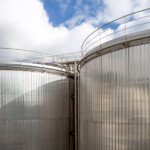
I serbatoi di stoccaggio del biocarburante di Bio Energia Guarcino a Guarcino, Frosinone, Italia. Al loro interno vengon gestiti diversi biocombustibili: derivati da olio di palma e da altri oli vegetali, oli e grassi di origine animale.

Veduta di Cartiere di Guarcino, Guarcino, Frosinone, Italia. A causa dell'attuale scenario di crisi, da fine settembre 2022 la centrale ha acquisito lo status di “impianto produttivo essenziale" con l’obbligo di massimizzare la quota di produzione da destinare anche alla rete nazionale.
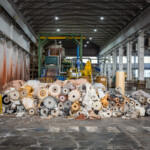
Scarti di lavorazione destinati alla rigenerazione circolare. La cartiera acquista scarti di lavorazione da altri produttori - o dai suoi stessi clienti - e conferisce gratuitamente il proprio scarto ad altre aziende del distretto produttivo come laterifici e produttori di cartone, evitando così la generazione di rifiuti.
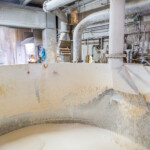
In una vasca viene prodotto l'impasto di produzione composto da acqua, cellulosa, biossido di titanio e pigmenti.
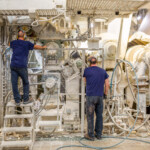
Tecnici a lavoro sulla macchina a ciclo continuo durante la produzione della carta presso Cartiere di Guarcino.

The purification system of Cartiere di Guarcino. The water, entirely intercepted from the "Cosa" river, represents 95% of the raw material used in the paper generation process. At the end of the production cycle, the filtered water is introduced into the reservoir.
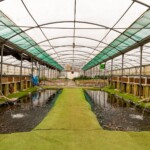
An aquaponic cultivation greenhouse at The Circle in Rome. Aquaponics is the result of a fusion between a hydroponic cultivation system and the reproduction of a natural ecosystem in which fish and bacteria produce nutrients for plant cultivation.
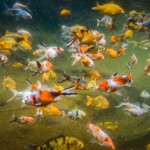
Fish in an aquaponics greenhouse at the farm The Circle, Rome. The essential nutrients for plant growth are provided by fish farming. In this system, elements such as nitrogen and phosphorus, deriving both from the excretion and dejections of the fish and from the decomposition of the food not ingested, can be absorbed by the roots of the cultivated plants which are directly immersed in the water.

Castel Giubileo, Rome, Lazio. Salvatore, 22, after the capture of a small specimen of 1.20 cm in length.
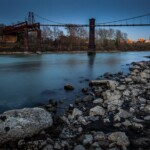
Castel Giubileo, Rome, Lazio. The old bridge of Castel Giubileo is one of the most popular fishing spots in the Italian capital. The remains of the bridge that collapsed in 1951 have created deep holes and pits where fish burrow.
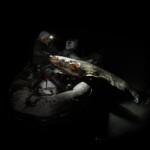
Montemolino, Perugia, Umbria. After a tiring struggle, Valerio drags a 2.12mt long and 58 kg weight on his dinghy.
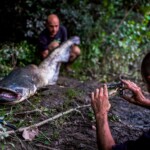
Ponte Milvio, Rome. Immediately after the capture of the fish follows a real photographic ceremony. To celebrate the victory over the fight in the water, almost always tiring and exhausting, immediately after the capture the sport fishermen photograph the dying fish lying on the shore.









